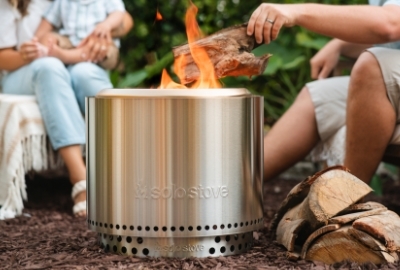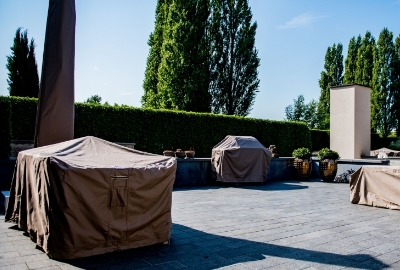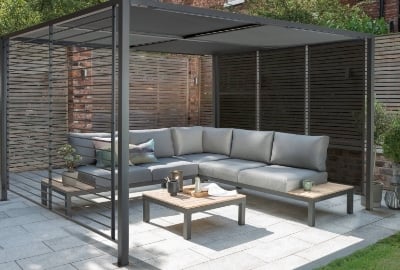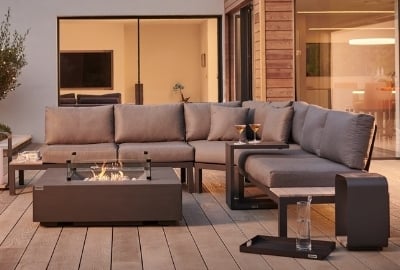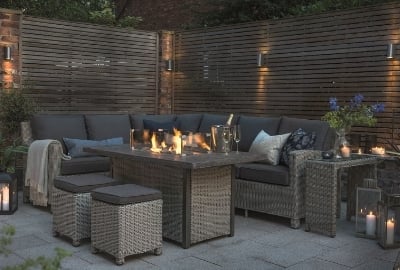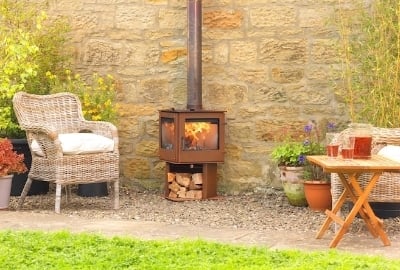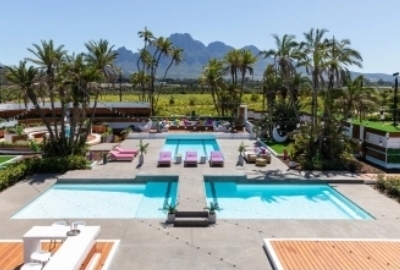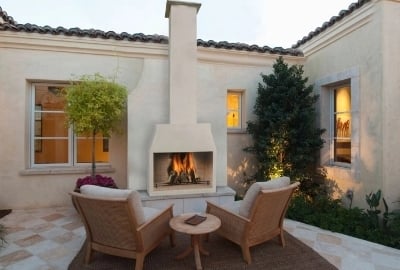Your garden is more than just a space for plants — it’s a sanctuary. Whether you're firing up the BBQ for friends or seeking a peaceful spot to unwind, thoughtful garden design can make all the difference. By drawing on the ancient principles of Feng Shui and Vastu, you can create an outdoor living space that feels balanced, energised, and perfectly suited to both socialising and solitude.
In this blog post, we’ll explore some timeless design techniques to help you reimagine your garden this summer.
Contents
What is Feng Shui?
What is Vastu?
Designing your garden according to Feng Shui and Vastu
Your garden is more than just a space for plants — it’s a sanctuary. Whether you're firing up the BBQ for friends or seeking a peaceful spot to unwind, thoughtful garden design can make all the difference. By drawing on the ancient principles of Feng Shui and Vastu, you can create an outdoor living space that feels balanced, energised, and perfectly suited to both socialising and solitude.
In this blog post, we’ll explore some timeless design techniques to help you reimagine your garden this summer.
Contents
What is Feng Shui?
What is Vastu?
Designing your garden according to Feng Shui and Vastu
Topic4
Topic5
Topic6
Topic7
Topic8
What is Feng Shui?
Feng Shui is an ancient Chinese practice focused on arranging spaces to encourage the natural flow of qi (or energy) and promote harmony between people and their environment. It uses principles like the Bagua map, which incorporates the five elements (fire, earth, water, metal, and wood), and directional energy to optimise how a space feels and functions. In gardens, Feng Shui can influence layout, plant selection, and the placement of features like seating or water elements to create a balanced, restorative outdoor space.
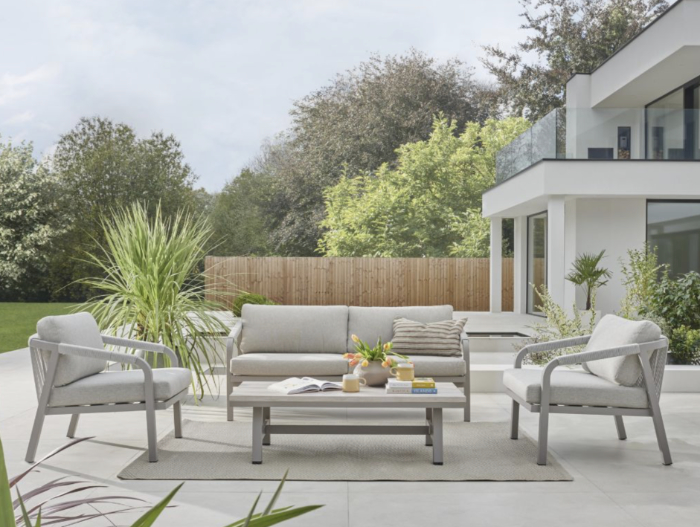

What is Vastu?
Vastu Shastra is a traditional Indian principle that aligns buildings and spaces with natural forces to promote wellbeing, prosperity, and spiritual peace. It's similar to Feng Shui in that it combines elements of design, layout, geometry, and directional alignments, but is rooted in Hindu philosophy. In garden design, Vastu focuses on directional planting, the placement of water features, and specific plants to attract positive energy and transform a garden into a sacred, energised space.
Designing your garden according to Feng Shui and Vastu
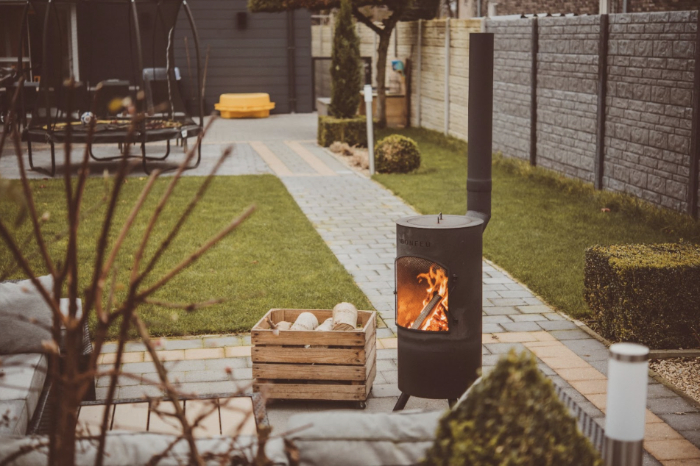

With a focus on balance and harmony, Feng Shui and Vastu principles are a great place to start when designing your garden. They'll help you understand how elements like layout, direction, and materials can influence mood and wellbeing. They’re also flexible enough to adapt to your lifestyle, personal tastes, and the way you want to use your garden.
Here are a few tips on how you can incorporate the principles of Feng Shui and Vastu into your own outdoor space:
Zone your space
As you'll want to use your garden for both active socialisation and quiet relaxation, start by zoning the space intentionally. Feng Shui encourages a balance between Yin (quiet, reflective) and Yang (active, sociable) spaces, so you might want to keep these areas separate.
For example, you can create a lively corner for hosting friends, complete with a garden dining set, bistro set, or fire pit, to encourage conversation. Install a patio heater for year-round socialising, and consider a BBQ or even an outdoor kitchen to transform the space into a hub for al fresco cooking and dining.
Next, carve out a tranquil corner for solo relaxation. Incorporate a lounge set or an outdoor sofa to give you a spot to rest and unwind. Fill the area with lush greenery to ground the space and invite calm. A parasol can create a sense of privacy and a cosy, enclosed feel, perfect for reading while sheltering from the sun.
You can also use natural dividers like trellises, hedges, or pergolas to define your separate zones. Curved pathways can help guide energy smoothly through the space, while open areas encourage interaction and movement.
Be mindful about furniture placement
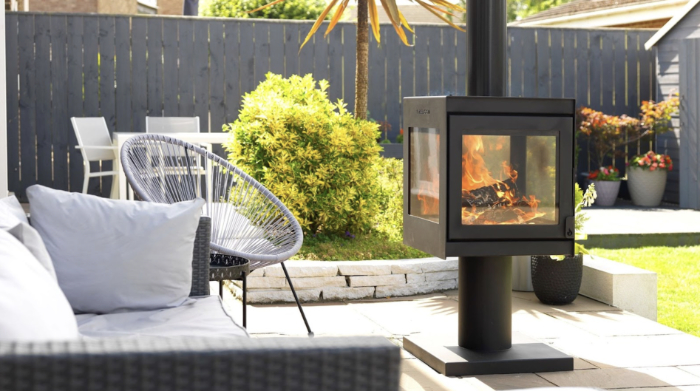

The Feng Shui Bagua map divides a space into nine zones, each representing aspects of life such as health, love, and prosperity, as well as one of the five elements. Vastu also follows similar principles in which different areas of the garden represent different Pancha Bhutas (the five elements).
|
Direction |
Feng Shui element |
Vastu element |
Symbolism |
Decor suggestions |
|
North-west |
Metal |
Air |
People/social space |
Use metal furniture and accessories like wind chimes to create a social and communicative atmosphere. This is also the ideal place for a gazebo or a relaxing patio area. |
|
North |
Water |
Water |
Career energy |
Add water features like fountains, ponds, or birdbaths to enhance career growth and flow of energy. The north is also the perfect spot for trees and flowers to grow. |
|
North-east |
Earth |
Water |
Personal growth |
Include plenty of greenery, stone, and clay for a grounding and nourishing environment. In Vastu, the northeast corner is sacred and ideal for water features or meditation spaces. Tulsi (holy basil) is often planted here for spiritual uplift. |
|
East |
Wood |
Air |
Family and health |
Incorporate lots of wooden elements like wooden furniture and trees. Bamboo, orange trees, and plum trees are popular in Feng Shui. Herbs are also good here for vitality and healing. This is a great place for a water feature or hot tub, particularly a wood-fired hot tub. |
|
South-east |
Wood |
Fire |
Wealth and prosperity |
A great relaxation spot, along with the north-west. Incorporate lots of soft lighting, wooden garden furniture, and water features for abundance and financial success. |
|
South |
Fire |
Fire |
Success |
Use vibrant colours like red and place an outdoor fireplace, such as a chimenea, or a wood-fired pizza oven to ignite passion and achievement. This is the best spot for large trees, especially if planted along a wall. |
|
South-west |
Earth |
Earth |
Relationships |
Add earthy tones and natural materials to strengthen relationships and harmony. The south-west should be heavy and stable, making it perfect for denser plants or trees. |
|
West |
Metal |
Water |
Creativity and children |
Incorporate metal elements such as aluminium garden furniture, as well as round shapes, along with some playful and creative accessories. If you have children, this is the perfect spot for an outdoor playground. |
Vastu also recommends keeping the centre of the garden clear for energy to circulate freely, promoting overall well-being.
Choose plants for positive energy
Both Feng Shui and Vastu advocate for plants that promote positivity. Bamboo, jasmine, lavender, and holy basil are top picks for good fortune and their perceived air purification benefits. Snake plants, peace lilies, and money plants are also considered to have energy-cleansing properties. Be mindful to avoid thorny or dried-out plants, which are said to stagnate energy.
Use colour theory to set the mood
Colour plays a huge role in how a garden feels. By being selective with your plants and furniture, you can transform the mood of each space. For example, to create a calming, peaceful environment, use cool colours like blue and lavender. For an energising social space, opt for warmer tones like red, orange, and yellow — this can be achieved through décor or by the addition of an outdoor fireplace. If you want to create a dreamy, romantic look, stick to shades of pink, purple, and white.
Create seamless indoor-outdoor flow
The connection between your indoor and outdoor space makes a huge difference to the overall feel of your home. A seamless transition between the two not only creates a sense of flow, but also makes both zones feel more spacious and welcoming. Use similar natural materials like wood or stone in both areas for visual harmony. For example, if you have wooden flooring inside, consider a wooden deck or wooden furniture outside to echo the look.
Large doors or windows can help with the transition and physically open up the space. Meanwhile, matching colours or décor accents (like throws, pots, or cushions) will make the two spaces feel like one, helping to create harmony and balance between the natural and built environment.
Now you’re familiar with some of the key principles of Feng Shui and Vastu, you should be well on your way to transforming your garden into a tranquil, energised space that supports both relaxation and connection.
At StovesAreUs, we offer everything you need to bring your garden vision to life. Explore our outdoor living collection to discover a wide range of stylish garden furniture, outdoor heating solutions, BBQs and BBQ accessories, and hot tubs. You’ll also find a variety of high-quality cooking appliances, fireplaces, and stoves to help you enhance every corner of your space.
For more garden inspiration and top design tips, visit our blog.








